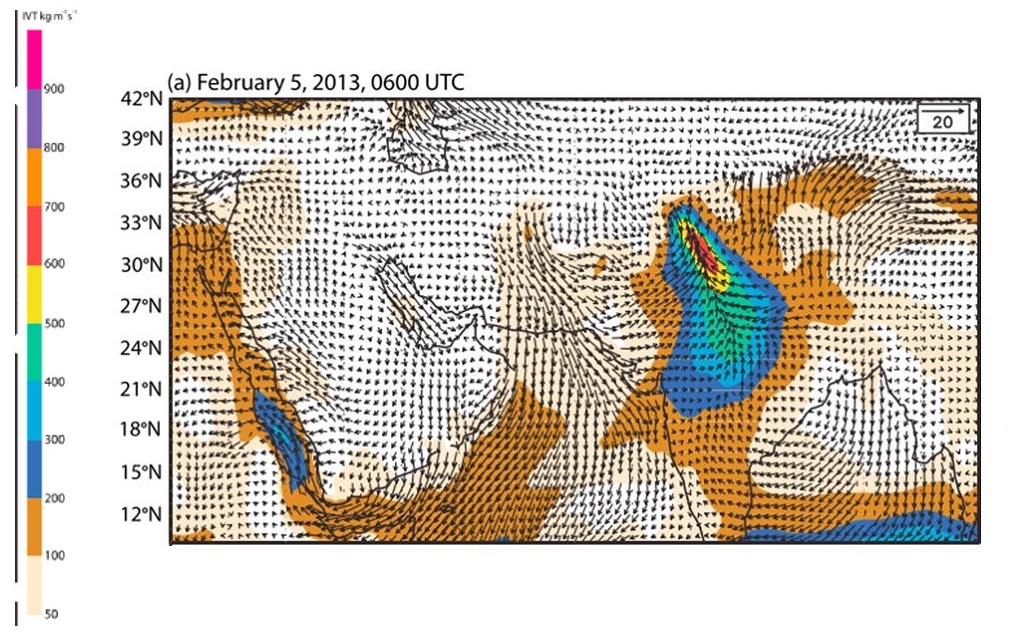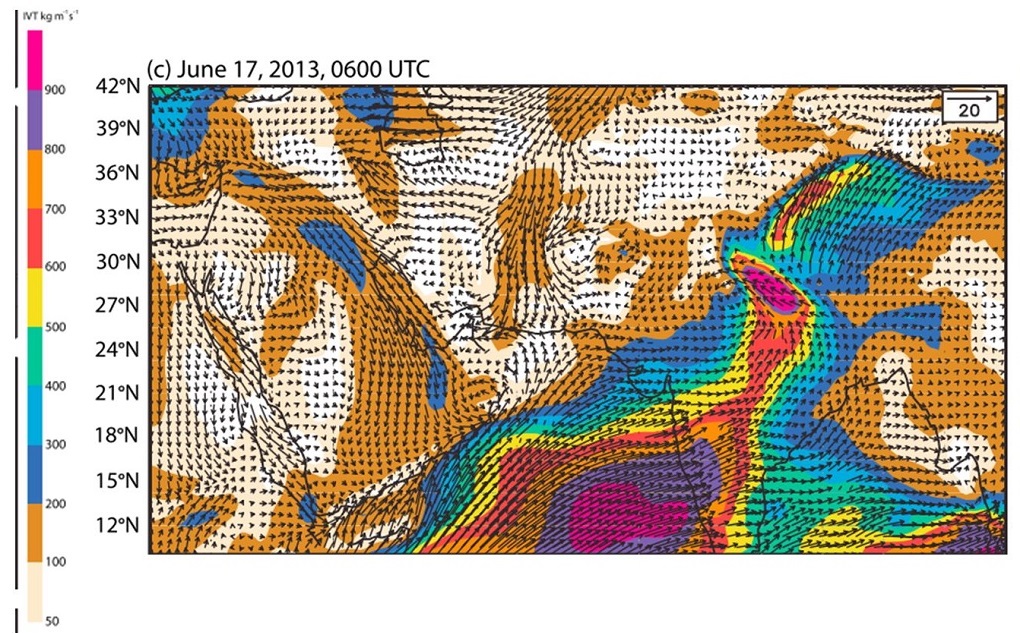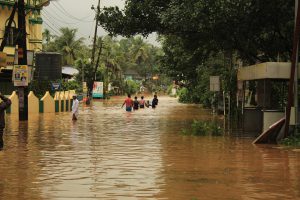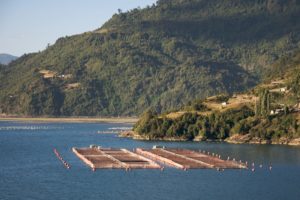June 17, 2013 was an eventful day in South Asia – an unprecedented calamity gripped the Indian state of Uttarakhand, where more than 5,000 people died in the floods triggered by continuous rain. In western Nepal, a swollen Mahakali displaced over 2,500 people as the river burst its banks in Darchula and inundated large swathes of land in the district headquarters Khalanga.
Four months before the disaster struck, South Asia grappled with yet another eventful day. On February 6, 2013, torrential rain killed 34 people in Pakistan, most of them living near the country’s north-western border. In Nepal, a heavy downpour fell along with hailstorms in the western hills and the mountainous districts along with a few areas in the central region. In Humla and other hilly districts, incessant snowfall crippled general life. But the eastern part of the country, which had not received rain for a long time, remained dry.
While both the events have been linked with the ‘Westerly Disturbance’ that brings rainfall to the higher latitude of South Asia usually during winter, findings from a new study suggest that a previously unexplored phenomenon, called ‘atmospheric rivers (ARs)’ or ‘rivers in the sky’, could have also contributed.


According to the US-based National Oceanic and Atmospheric Administration, atmospheric rivers are long, narrow regions in the atmosphere that look like rivers in the sky. They transport water vapour outside the tropics as they move with the weather. When the atmospheric rivers make landfall or hit mountains, they often release this water vapour in the form of heavy rain or snow.
This definition intrigued Kritika Thapa, currently a consulting environmental engineer in Syracuse, New York. Thapa’s graduate school adviser at the State University of New York, Theodore Endreny, where Thapa was pursuing her research in 2013, mentioned atmospheric rivers while Thapa was trying to come up with a topic for her master’s thesis in water resources engineering.
“Ted (Endreny) and I were discussing using Tropical Rainfall Measuring Mission (TRMM) data for creating Intensity Duration Frequency (IDF) curves for Nepal as I had wanted to focus on extreme events using remote sensing data. Then he mentioned the possibility of analysing the TRMM data for trends in the formation of atmospheric rivers. That was the first time I heard about ARs and was fascinated,” said Thapa, the primary author of a paper on atmospheric rivers in the Himalayan region published in the Journal of Geophysical Research- Atmospheres.
Thapa, who is originally from Nepal, learned that ARs had been mostly studied in Britain as well as the West Coast and Central United States and that they have the potential to influence regional precipitation and flooding. For example, in the state of California anywhere between 30-60% of the rainfall is caused by ARs, meaning managing the reservoirs to account for this deluge is essential both to stop flooding and retain water for domestic needs. Thapa wanted to find out if such events existed in Nepal and the Hindu Kush Himalayan region.
“Nepal has the high Himalayas with some extra tropical cyclone influences in the form of western disturbances and it’s not that far from the coast,” said Thapa. “I wrote to a prominent scientist who had been working in the field of ARs for a long time and asked if ARs could be active over the Himalayas. The scientist did not have a definitive answer and given the low presence of extratropical cyclones (that ARs are typically associated with), was not inclined to suspect that ARs would be active in the region.”
Thapa decided to pursue it anyway, given the potential benefits if ARs were detected in the region.
“The research was designed to advance humanitarian engineering by focusing novel computational algorithms on global environmental data to benefit high vulnerability communities,” said Endreny, one of the co-authors of the paper, and chair of the environmental engineering department at SUNY ESF. Endreny, along with Craig Ferguson, a researcher and faculty at Atmospheric Sciences Research Center (SUNY-Albany), helped with the design of the study.
Thapa then ran the integrated water vapour transport (IVT) based algorithm, which has been proven to be robust for AR representation, using ERA-Interim, a global atmospheric reanalysis created by the European Centre for Medium-Range Weather Forecasts. “We do not have precipitation records for all areas we wanted to cover, that is why we use the ERA-Interim data for precipitation as well,” Thapa told thethirdpole.net.
The trio decided not to look at data from the monsoon because monsoon precipitation was well studied. “The October to May period brings catastrophic precipitation in certain parts of the region and warranted a focused study to improve forecasting and reduce risk and harm,” said Endreny.
Thapa completed her master’s thesis in 2015 and submitted her manuscript to JGR-Atmospheres for review with some additional precipitation analyses in August 2017. Meanwhile, another group of scientists were also studying the nature of ARs in South Asia, especially in the Bay of Bengal Area using a similar IVT algorithm. They were giving finishing touches to the project in July 2017.
ARs are real and they are affecting South Asia
Both the papers report that ARs do have a bearing on the weather in Nepal and its neighbouring areas. Thapa detected the presence of 433 ARs over 35 years, or approximately 12 ARs yearly, around western Nepal. They found out that ARs can explain 78% of daily precipitation that exceeds 33 mm in the non-monsoon season from October to May.
The other paper, meanwhile, detected a total of 149 ARs in the Bay of Bengal area from 1979 to 2011. It detected more AR events in the area in May and October than during any other time of the year. In addition to that, the researchers found that 24% of ARs occur during tropical cyclones. “This implies a possible connection between them [ARs and tropical cyclones], in addition to the similar intra-annual distribution,” the paper stated.
The researchers also found a close correlation between AR and extreme rainfall (ER) events. “A large proportion of ARs would lead to ERs, while a small fraction of ERs occur after ARs,” they noted.
“Atmospheric rivers are new to the meteorological discourse in this part of the world,” said Madan Sigdel, Assistant Professor at the Central Department of Meteorology and Hydrology at Tribhuvan University, Kathmandu. He said that Nepal’s forecasters are not aware of ARs.
Along comes climate change
A NASA-led study recently showed that climate change is likely to intensify atmospheric rivers across the world by the end of this century. While the study suggests that their number will be slightly reduced, they will be significantly longer and wider. According to the study, the frequency of the most intense atmospheric river storms is projected to nearly double.
Ferguson, Thapa’s thesis co-adviser and co-author of the paper, said, “Effective water resource management and disaster preparedness is founded on a firm understanding of the primary drivers of regional precipitation means and extremes.”
“We showed for the first time that a surprisingly large number of annual precipitation extremes in Nepal were linked to atmospheric river events occurring outside of the summer monsoon season. This finding is remarkable because, until now, water resource management has mainly focused on the monsoon.”
He believes that added accounting for atmospheric rivers would substantially improve regional management capabilities. “In a warming world, glacial meltwaters will compose an increasingly smaller fraction of regional stream flow. Conversely, atmospheric rivers are expected to intensify in magnitude and frequency. Thus, the role of atmospheric rivers in Nepalese water budget stands to grow.”
Thapa believes that accounting for ARs can potentially be used to make forecasts more accurate, better manage water resources in places like California, and make Himalayan communities more resilient to climate change. “Our study only scratches the surface of AR activity in the Hindu Kush Himalayan region and I hope that there will be follow up studies in the future,” she said.


![Only a little grass and a few animals grazing near the Deosai National Park [image by: Amar Guriro]](https://dialogue.earth/content/uploads/2018/09/16-B-300x200.jpg)

![Sharada Bogati of Bidur-9 cleaning dishes beside her home. Unlike many neighbourhoods in Bidur, families in her neighbourhood get enough water for their daily use and also for vegetable farming [image by: Bhrikuti Rai]](https://dialogue.earth/content/uploads/2018/08/MG_9723-e1595342190272-300x200.jpg)



